Budapest, when the Danube separates us (1/6)
1st June 2016
Day 1: the closing of the Slovak gate, the opening of the Hungarian
My key turns one last time in the lock of my Presov apartment. I close the door as I close my stay in Slovakia. Hanging on the right, I find a wooden magnet that the neighbour left for me. It represents a yellow coat of arms marked with "Presov 2016". It's over, completely over. No matter how much I have prepared for this departure: I can hardly believe it, after four months living in Slovakia.
It's 4:10 a. m. the corridor is still dark. My suitcases break the silence, unloading on the stairs. My neighbour rom the next floor above, a man with a moustache and white hair, helps me down one of my two bundles while he was carrying his rubbish cans to the containers. TI still wonder today what he was doing up at such an hour.
Last punching, last sunrise in Slovakia
Behind the CBA convenience store, where I stocked up for four months, my night bus is waiting for me. I am afraid of missing it because I am right on time. If it leaves without me, it will be postponed until tomorrow. A day lost! Fortunately, I have it. I punch my last bus ticket into the yellow machine like a post office mailbox. Direction the station (stanica) of Presov. Where I arrived almost four months ago.
I smiled down the concrete slope, which I then climbed all disoriented. I had not experienced anything yet. This morning, my luggage and my head are more loaded than in early February. How many memories, discussions, incredible situations have I experienced? And it may not be over, since I have a week left.
My train to Kosice is at 4.56 am. I hesitate to have a coffee. I change my mind. Even with a lid, it seems impossible to me, unless I spill the drink at one point or another. Because I do not forget that there is no elevator in this station to access the tracks. Afterwards, you will have to climb the stairs and the high steps of the wagon.
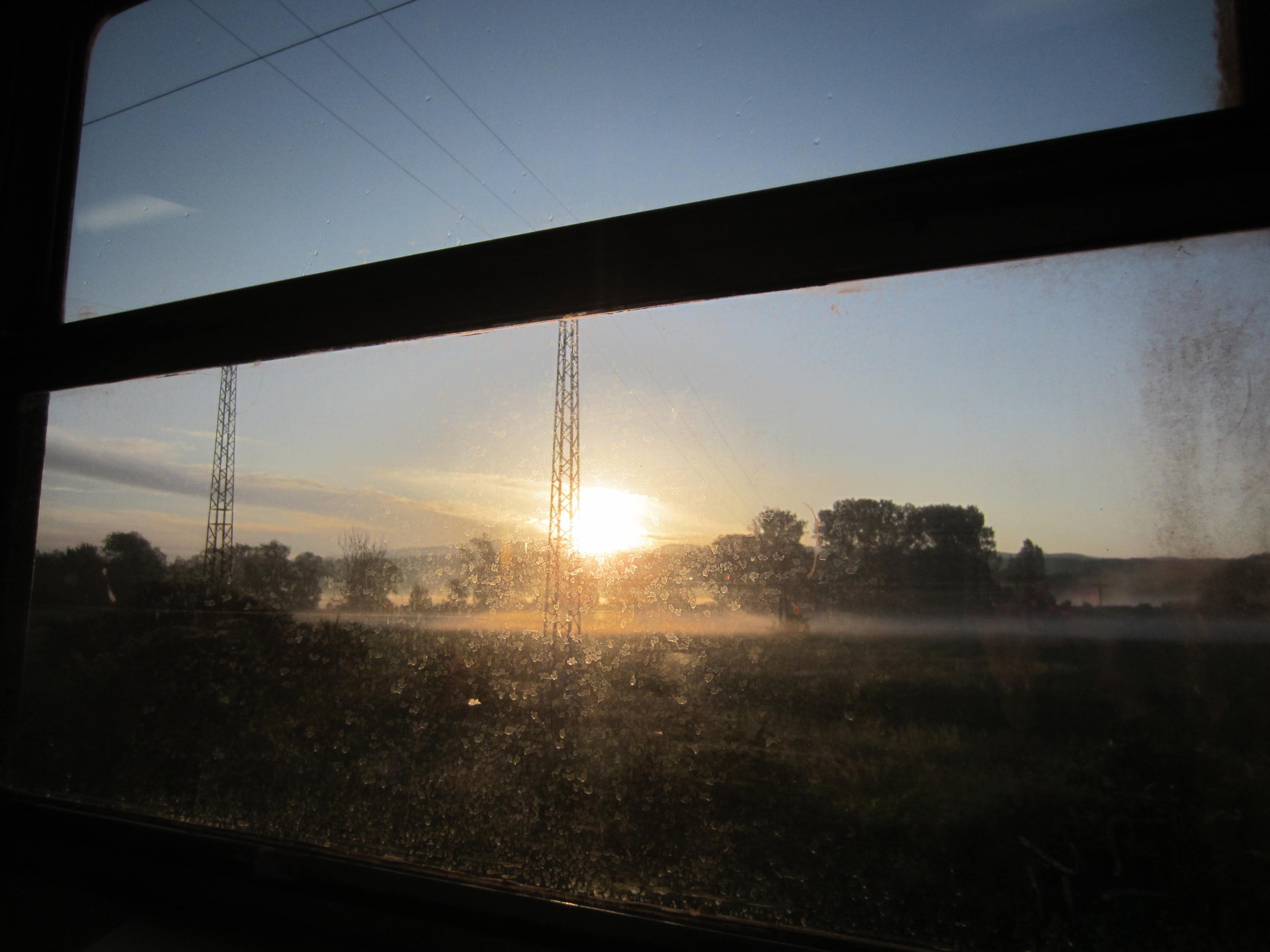
The sun does not rise until I am on the train, on a mountain which, at ground level, is still cloudy. Me, I'm in the same state! I leave my knapsack a packed breakfast the day before, which I eat without a big heart. The water seems to be terribly bland.
Kosice. I have twenty minutes to reach to the train from Budapest, which leaves at 6:02 a. m. Obviously I have to form a line of stairs, but the train platform could have been even worse. As I search for a quiet compartment to end my short night (four hours), my foot leaves Slovak soil. I must resolve to admit that the end clapper has slammed.
I sleep willy-nilly in a compartment where I can stretch my legs on three adjoining seats. I stumble against the young people, located a little further forward, who never stop sneering and gutting their throats!
Two hours later, I am woken up by the controller with a pinch on my shoulder. Accompanied by a family, she becomes irritated by a "push yourself away, these people have more room in the wagon. " It is true that, over the stations, the train, made up of three cars, has become densely populated. We are already in Hungary, as a tank marked with a white-red-green flag, posted on a railway platform, coldly confirmed it to me.
Budapest is slow to show itself. I’m afraid I’ll be late for the 11-hour Parliament tour I booked. I still have to put my bags at the hostel. In fact, I am surprised to return suddenly to the Hungarian capital. Twenty minutes before arrival, I would have thought myself in the countryside, with these stalls with washed out signs, these tacots dating from Mathusalem, these roads in poor condition. My approach was a little disturbed, may I say after the fact.
Harassment of taxis at Budapest train station
The train will enter Keleti station (Keleti palyaudvar), the main station in Budapest, at 9.50 a. m. instead of 9.30 a. m. damn. My first goal when arriving is to take a long-term ticket to use public transport. I still have a week!
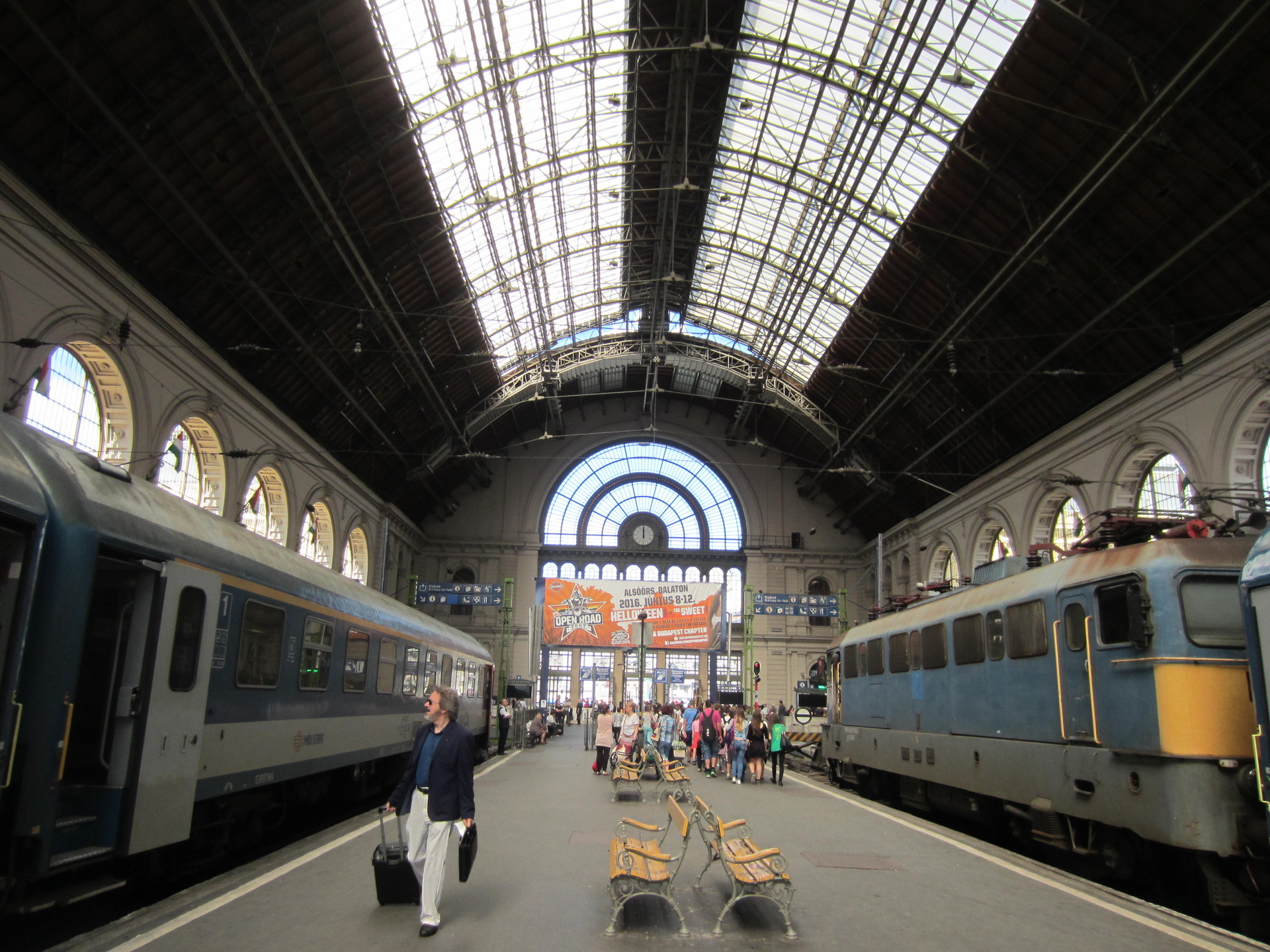
Keleti station (1881) is the largest station in Budapest. Keleti meaning "from the East", it serves eastern Hungary, the Balkans, Romania and of course Slovakia.
But I would have an obstacle to this inclination. Carrying two large suitcases, I would not not go unnoticed. As soon as I got out of my carriage of the train, a taxi driver harassed me so that I ordered him a ride. Quite hypocritically, he takes a suitcase out of the train. "No thanks" I decline. As I advance under the metal hall, like the Gare du Nord in Paris, another wants me to bite his offer: "10 € to go to the center. I spit out his lure. When I get to the entrance, I will have to play the bad guy with an ultimate driver for the taxis to let me go.
Thanks to the help of a Chinese couple who looked after my luggage, I was able to buy a monthly student ticket from the city's transport authority. One task done!
I still have the hardest part: joining my hostel. It is however located not far from Keleti, in the Jewish quarter. But with my luggage... What fun was it to take the metro, with correspondence to my address, in a language that is as inextricable for me as for a newbie? With a suitcase grating the ground, because one of the wheels had become faulty.
In front of the building, I can only complain when I realize that the hostel is on the second floor. I painfully climb the steps, however low. But I like the atmosphere of the place. If the façade over looking the street is as black as coal, the patio looks colourful and cheerful, a bit like when I was in Cuba. Also, on the first floor, a bar where music makes you want to dance. At the reception, I inquire to find out if there might be a possibility of leaving my suitcases downstairs. But no… Too bad, you will have to go up and down in 6 days the two floors!
From breaded cutlet to goulash
I'm going to Parliament (Parlament or Országház), the third largest in the world (after those in Buenos Aires and London). Coming out of the metro, its exterior features impress me. With its dome and spiers, this temple of democracy resembles a Gothic cathedral, although built between 1885 and 1904. Instead of arriving at 11 am as I had planned, it is near noon. I'm asking if I can postpone the visit. There is one in French at 1:30 p. m. Just time for lunch. So I go on again, to a traditional restaurant, Hungarikum Bisztro, that I found on the internet.
I really realize that I have become a foreigner in Hungary again. In Slovakia, after 120 days, I had lost this feeling. In the window, I no longer understand a treacherous word of the vernacular (luckily English is there!), Or even the prices that are in guilders. How much is 4,500 forints in euros? A lot? To find out, you just have to be good at mental math to divide each price by... 300 each time!
Sitting at the restaurant, I am out of place with a menu that no longer lists the classic kuraci rezen, breaded chicken cutlets or the halusky bryndsove, gnocchi with sheep's cheese that I usually ate in Slovakia.
 La soupe de goulash, le plat national hongrois.
La soupe de goulash, le plat national hongrois.
I let myself be tempted by a traditional menu, in particular the goulash soup (meat and potatoes) as a starter. In France, we mistakenly believe that goulash is a main course when, in fact, it is only a soup! The thick stew imagined to be a goulash is actually called porkolt.
Another apprehended Hungarian tradition, the digestive. Out of politeness (I usually never take strong alcohol), I accept a die of palinka, the brandy of local fruits. It is what borovicka (plum alcohol) is to Slovakia, what cognac is France to be more telling. I leave satisfied with this first Hungarian gastronomic experience, despite the very touristy side of the place. It was full of international customers (Chinese, American, Italian... ), when the place was empty of premises.
Parliament, cathedral of democracy
I arrive just in time at the security gate, located in the basement, in this tourist information center, which looks like a bunker. I hear French. French! It is our tour guide who gives recommendations, before passing in front of the agents. I’m just when she says, "If you have knives or metal objects, let them know! "This is bad news, I have in my bag an Opinel (Savoyard folding knife) very local. I will get it back out.
This is the first guided tour in French I have on my entire trip. Also, I am surprised by the number of us: more than thirty. I come from a country where the French are as common as banana trees in Iceland, this concentration of Hexagonal people confuses me. My ear must re-adjust to hexagonal speaking, more used to English, the language of travel no matter what people say.
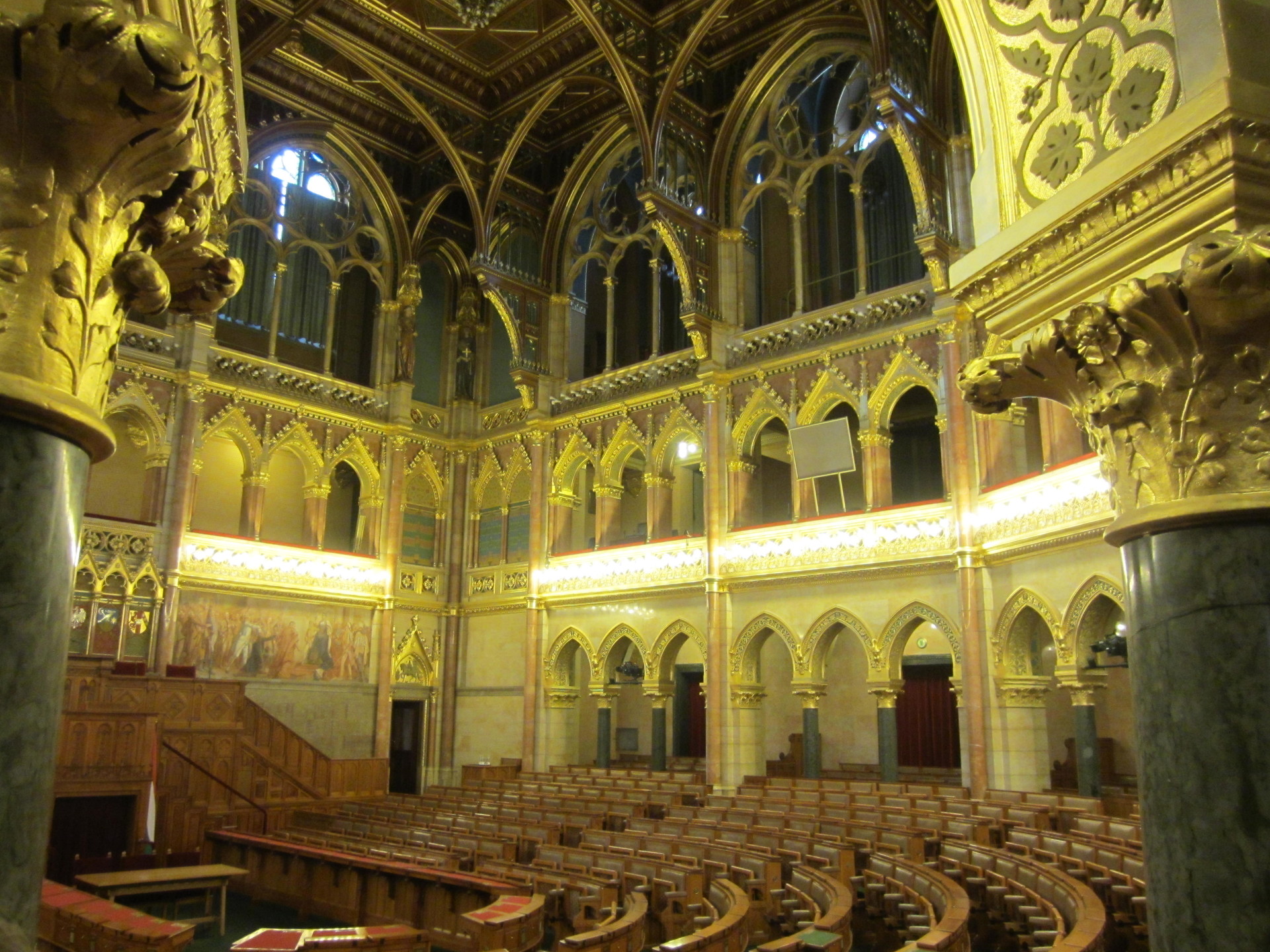 The lower house, where the Hungarian National Assembly meets.
The lower house, where the Hungarian National Assembly meets.
In the group, made up mostly of retirees, a lady, hair dyed blond, air haughty, rattle to excess. She fumbles on the not very fluent French of our guide; grumbles at the fact that there are too many of us to fully appreciate the visit. It must be said that the Parliament is the flagship monument of Budapest, certainly the most richly decorated, with its golden vaults, its ubiquitous marble columns. The National Assembly Hall, the height of the visit, was "hungry" as much as ours.
Coming out, I am dazzled as if I had left a royal palace. I would have appreciated that the enchantment lasts longer: the visit lasts barely an hour. Finally, I could just not have gone inside. On certain days, the palace is closed for receptions or for visits by official delegations.
I will then see the similar of the Parliament in height: the basilica Saint-Etienne (Szent Istvan bazilika). To show equality between religious and political power, the two monuments do not exceed 96 meters each. Why 96? Because the figure refers to the settlement of the Hungarian people, who came from the north of the Urals, in the Danube plain in 896.
Inlay on a guided tour of Budapest
English comes to my ears. It's on the basilica. A group of young people listen to a young guide too. I introduce myself. On his ultramarine blue T-shirt, I see written: "Free city tour. I follow them, which will change my lonely wanderings.
Steffen, the guide, seems like a man who takes life from the bright side. Recalling his quality as a language teacher, he does not find it justified that Hungarian be considered one of the most difficult languages in the world. What he finds easy is to assemble groups of words to make sentences. For my part, I find the language more complicated than Slovak. Even some international words do not show up in the Hungarian language. Examples: restaurant called etterem (restauracia in Slovak), egyetemi university (univerzitnu in Slovak).
Hungarian does not, however, resemble any other language, somewhat Finnish and Latvian (the root is Finno-Ugric). Its pronunciation is very different from Latin languages. That is to say that instead of our 26 letters, there are 44! The Slovak already seemed difficult to me with its six variations but the Hungarian is the pompom!
A small nation (barely 10 million people), Hungarians are proud of the number of innovations they have given to the world. Thus, Steffen extracts from his bag a metal box from which he takes a Rubik's cube, a ballpoint pen and a tube of vitamin C. "These are all Hungarian inventions" he surprises. He will not fail to mention the four Hungarian Nobel Prize winners.
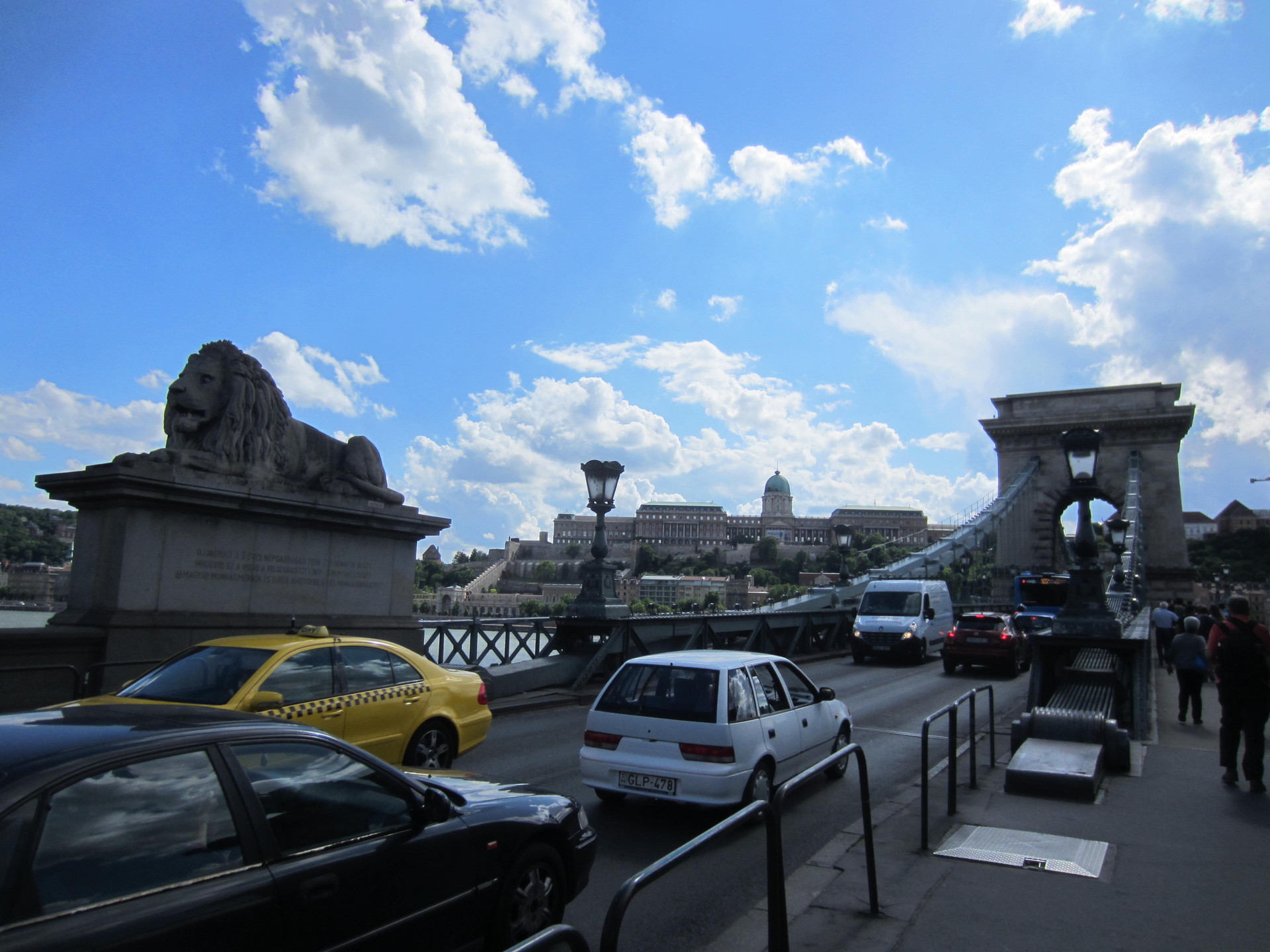
On the Chain Bridge, one of the busiest for tourists, with the Liberty Bridge, further downstream.
We are now on the other side of the Danube, thanks to the Chain Bridge (Szechenyi lanchid). Destroyed in 1943 by German troops, it will be rebuilt in 1949 identical to the original from 1849.
We enter the oldest part of the city, Buda, which is also the richest. As our guide likes to joke, “there are two types of people in Budapest: those who live in Buda, and those who would like to live there. "He insists on claiming:" You can be Budapest like me and live very well in a communist bar in the suburbs. "
He cam across a few tourist attractions in passing. First the funicular, the second oldest in the world (the oldest is in Lyon), where a small tail has formed: "The tail is not yet too large... But if I can give you some advice, it is useless to wait half a day for two minutes of ascent. The climb to Buda hill is really not long and difficult, I never lost a visitor! " He laughs.
Once at the top (the whole group!), it is the thermal baths that take it for their grade. "It does not do much to make several thermal baths. What varies is only indoor or outdoor baths, mixed or non-mixed. Afterwards, it's always the same thing: alternating between hot and cold baths. At the end of the guided tour, he reveals the scam of the Fisherman's Bastion, a sort of rampart decorated with towers. “Do not pay 1000 forints (3 €) to get on the bastion. You will have the same view at the foot! "
A first at the opera house
I go back to the hostel to put on a shirt. Tonight at 7 p. m., the first time in my life, I'm going to the Budapest Opera House. I took advantage of much cheaper rates than at home to be initiated. To get there, I take metro line 1, the oldest in Europe. It has kept its original décor. The stations are covered with earthenware and stylised chestnut-coloured signs; the oars are decrepit yellow and the padded seats are dark brown.
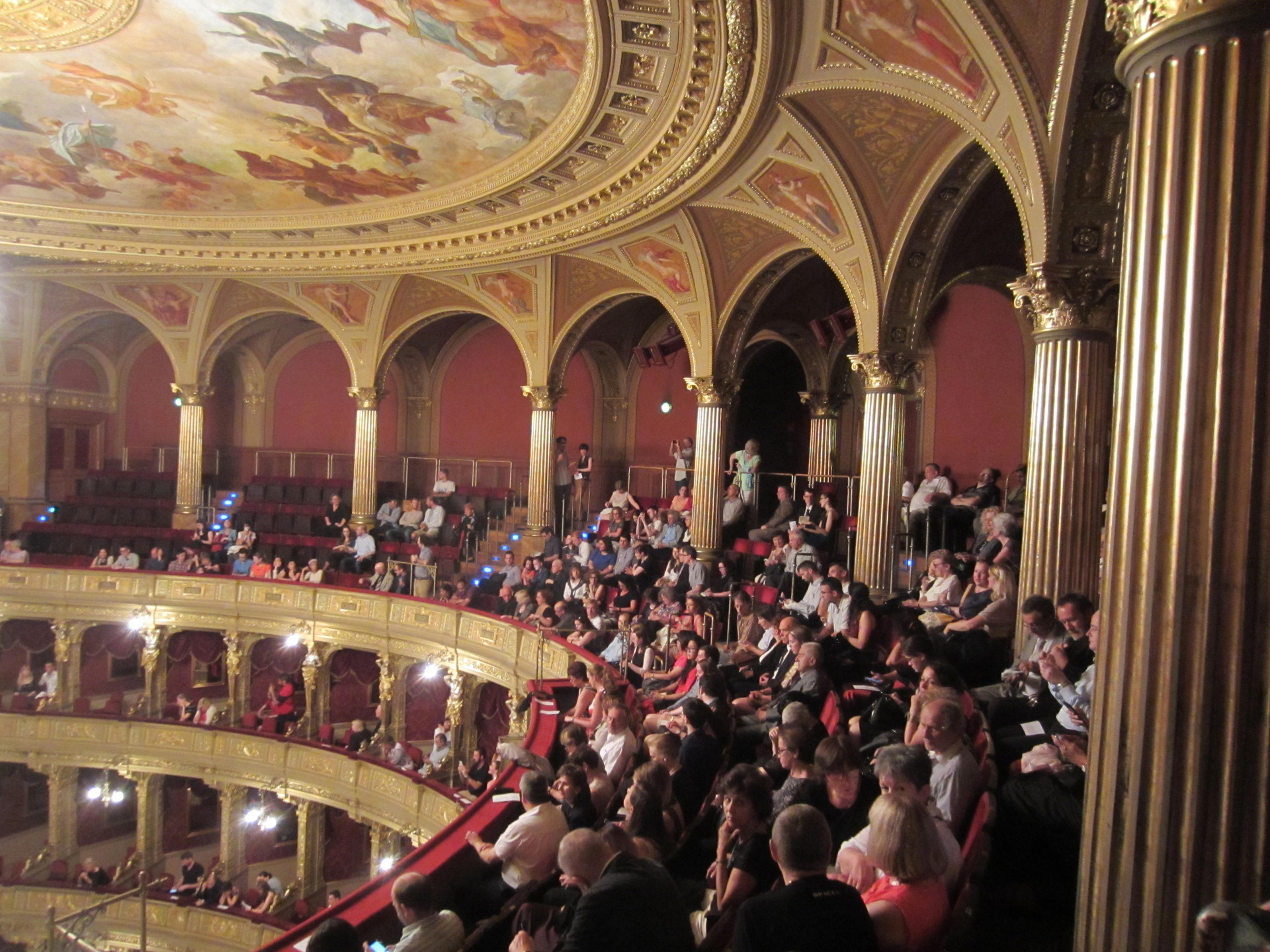
In the Opera room, neo-renaissance style, seen from the third bottle. Some, see the scene from so far, did not hesitate to bring themselves with binoculars!
The Opera House is as decked out in gold as the Parliament seen in the early afternoon. Just for these executives, I'm glad I came. The people, themselves, are mainly, to see their clothes, from the upper reaches of Budapest. Besides, they probably live more in Buda (bobo district, right bank of the Danube) than in Pest (more popular district, although the opera is there, left bank). The prices charged at the buffet confirm this. A small ham and butter costs around 1,500 forints (€ 5).
The opera is an adaptation of a play by Shakespeare, The Tempest. With the intermission, there were three hours of shows. Pleasure of the eyes, when the passengers of the boat seem like a tide with their arms swinging upwards. Pleasure of the ears of course, when the human instrument that is the voice vibrates in the treble or trembles in the bass. I admit that I did not understand everything about the plot, despite the subtitling in English in addition to the Hungarian. But the main thing in opera is to savour the sound, and not the text as in the theatre.
I stay in the musical field when I return to my hostel. Didn't I tell you what her name was? Casa de la musica.
Photo gallery
Content available in other languages
Want to have your own Erasmus blog?
If you are experiencing living abroad, you're an avid traveller or want to promote the city where you live... create your own blog and share your adventures!
I want to create my Erasmus blog! →




















Comments (0 comments)